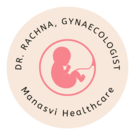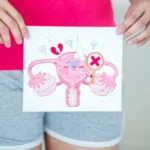Have you noted sudden changes in your mood and your body feels bloated? You are experiencing these changes because of premenstrual syndrome (PMS). Nearly 80 percent of women experience premenstrual symptoms, which affect them in different ways. These changes can be physical, emotional, and mental. Most women consider this as an early sign of pregnancy; however, when the period starts, PMS symptoms usually go away.
What is PMS?
Premenstrual Syndrome, or PMS, is a group of physical and emotional changes that occur about a week or two before your period. Research says three out of four women experience PMS at some point in their lifetime. PMS usually occurs after ovulation and before the onset of periods because of the shifts in the estrogen and progesterone levels. After the ovulation phase, the corpus luteum releases estrogen and progesterone that prepare the uterus for pregnancy. In case fertilisation does not occur, the hormone levels drop, which triggers PMS symptoms like mood swings, fatigue, and breast tenderness.
The various severity levels of Premenstrual syndrome are as follows:
- Mild PMS: You may experience slight pain and discomfort, which can be managed without intervention.
- Moderate PMS: Not able to perform daily activities due to pain and noticeable changes.
- Severe PMS (PMDD): Symptoms are intense and persistent, requiring medical intervention.
Symptoms of PMS
PMS symptoms are different for every woman. Some experience mild PMS symptoms while others get extreme.
The PMS is a combination of physical and emotional symptoms that may vary with age.
The physical symptoms of PMS are as follows:
- Swollen or Tender Breasts
- Clumsiness or Fatigue
- Feeling bloated
- Cramps
- Acne on face
- Headache and backache
- Constipation or diarrhoea
- Lower tolerance for noise and light
The emotional or mental symptoms of PMS are as follows:
- Depression or feeling anxious
- Not able to concentrate properly
- Appetite changes or food cravings
- Feeling less interested in sex
- Feeling tired or sudden urge to cry
- Disturbed sleep cycle
How many days before your period is PMS?
PMS usually starts 1-2 weeks before your period. They often start 5 days before your period and usually go within 3 to 4 days of your period starting.
It occurs after ovulation and before the shedding of blood if the woman is not pregnant. It occurs due to the hormonal fluctuations in the luteal phase of the menstrual cycle.
Difference between PMS symptoms and Pregnancy Symptoms
Many women consider PMS symptoms as early pregnancy symptoms. PMS and early pregnancy symptoms can be similar however, it is important to understand the key difference between the PMS symptoms vs Pregnancy symptoms.
Let us look at the key differences between PMS and pregnancy symptoms
| Symptoms | Premenstrual Syndrome | Pregnancy |
| Changes in Breast | Swelling and tenderness in the breast, which goes away as the period cycle comes to an end | More noticeable changes like darker areolas, visible veins, large nipples, and increased sensitivity due to hormonal change. |
| Cramping | Mild to severe cramping before the onset and during periods. | Mild or no cramping in the early stages of pregnancy |
| Fatigue | It is temporary and occurs during the onset of the period, which gradually improves as the cycle comes to an end. | Extreme tiredness and intense fatigue last throughout the first trimester. |
| Frequent Urination | The urge to urinate frequently is not common in PMS. | Frequent urination due to hormonal changes, increased blood flow, and pressure on the bladder. |
| Food Cravings | Cravings for salty, sweet, or carb-rich foods increase due to hormonal changes. | Pregnancy cravings usually cause a strong aversion to certain smells and tastes. |
| Implantation bleeding | Implantation bleeding does not occur during PMS | Light spotting may occur 6-12 days after ovulation. |
Some similarities between PMS and pregnancy symptoms that often create confusion among women are mood swings, fatigue, bloating, etc. If you suspect that you are pregnant, taking a pregnancy test after a missed period will help to confirm.

When to see a Gynae doctor?
If you are suffering from severe symptoms like excessive back pain and joint pain, extreme mood swings, panic attacks, headaches or migraines, social withdrawal and loss of interest in daily activities, then you might have Premenstrual Dysphoric Disorder (PMDD). You must visit obs and gyne in Delhi to seek guidance and the required medications for healing PMDD.
How to deal with PMS?
The following measures will help you to deal effectively with premenstrual syndrome:
- Take smaller and frequent meals. Add calcium-rich and protein-rich foods to your diet.
- Limit salt and sugar intake to avoid bloating. Add citrus fruits, green vegetables, and complex carbs to your diet.
- Avoid smoking and consuming alcohol. Gynaecologist in Delhi says women who smoke and drink experience more intense PMS symptoms than women who don’t.
- Involve in regular exercise. Spend at least 30 minutes briskly walking, swimming, jogging, or doing yoga. Engaging in physical activities helps to reduce depression and fatigue.
- Manage stress, as it is one of the major causes of intense PMS. To deal with anxiety, panic attacks, and insomnia, practice breathing exercises, yoga, or progressive muscle relaxation.
Premenstrual syndrome can be overwhelming and challenging. The first step towards better health is understanding your body and its changes. Whether it is PMS or pregnancy, making informed decisions at the right time is crucial for your well-being.
Manasvi Healthcare has the best gynaecologists in Rohini, who provide personalised treatment plans for PMS and comprehensive care for menstrual health, pregnancy, and other women-related issues. Visit us or book your consultation today for any gynaecological concerns!




